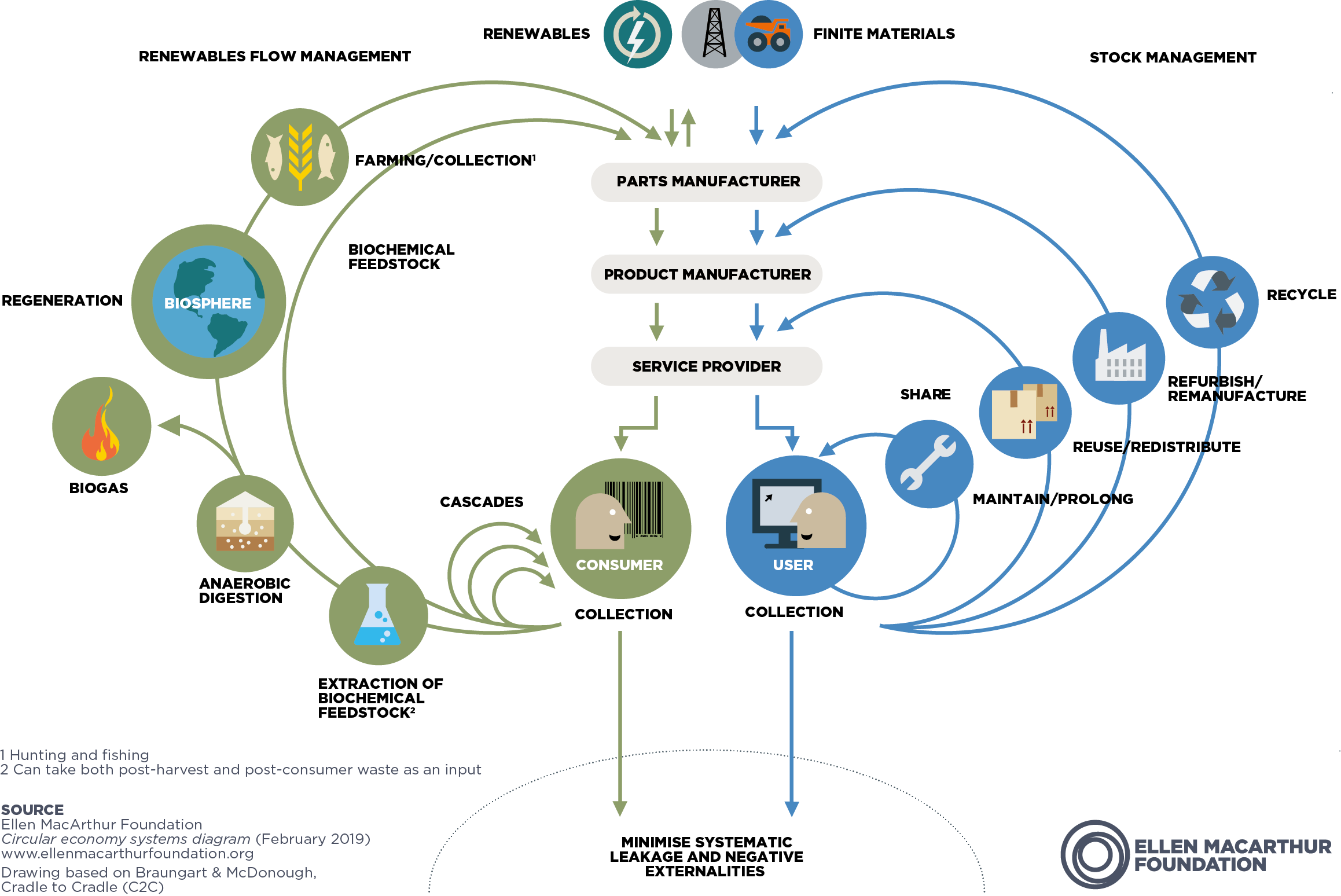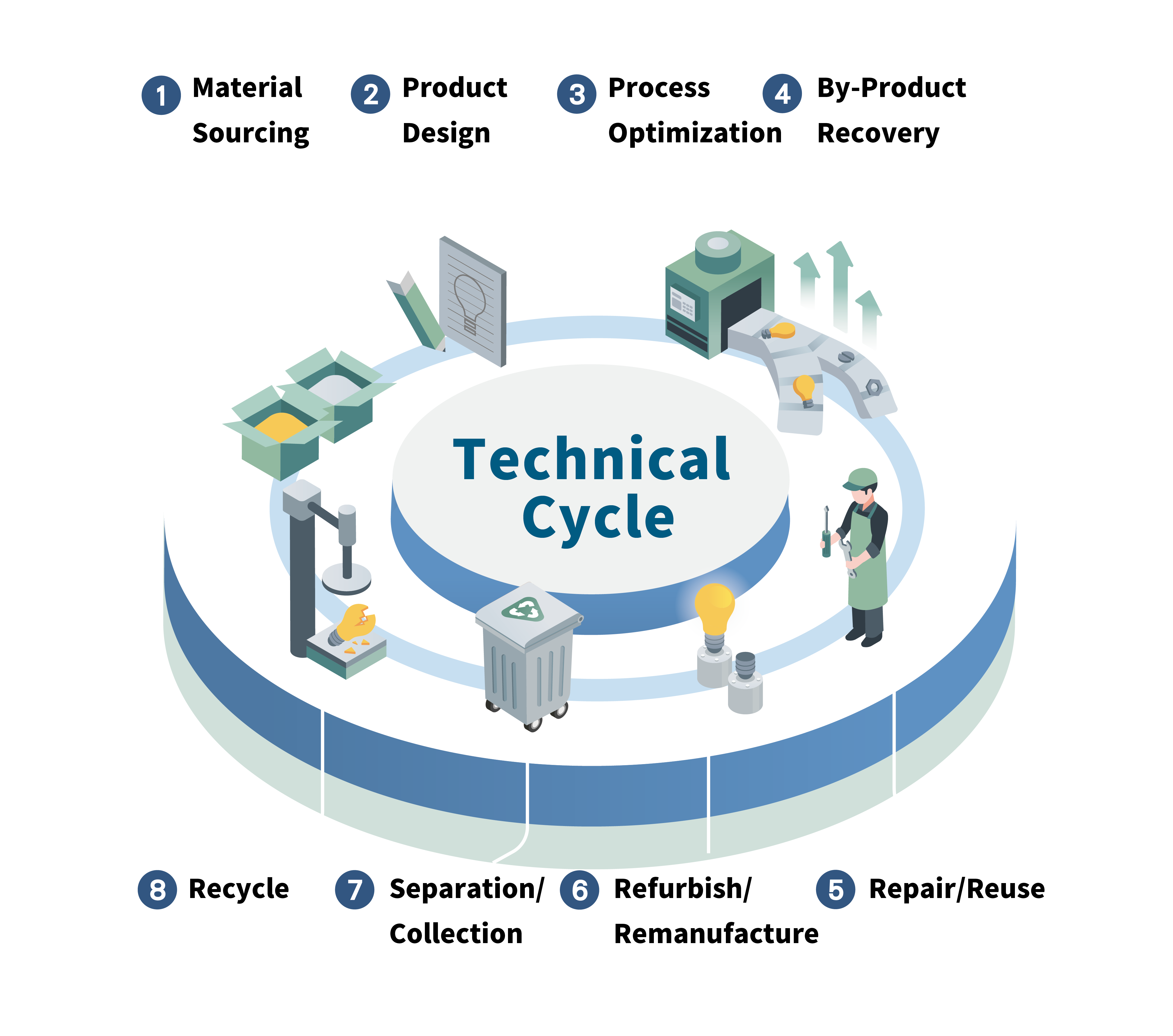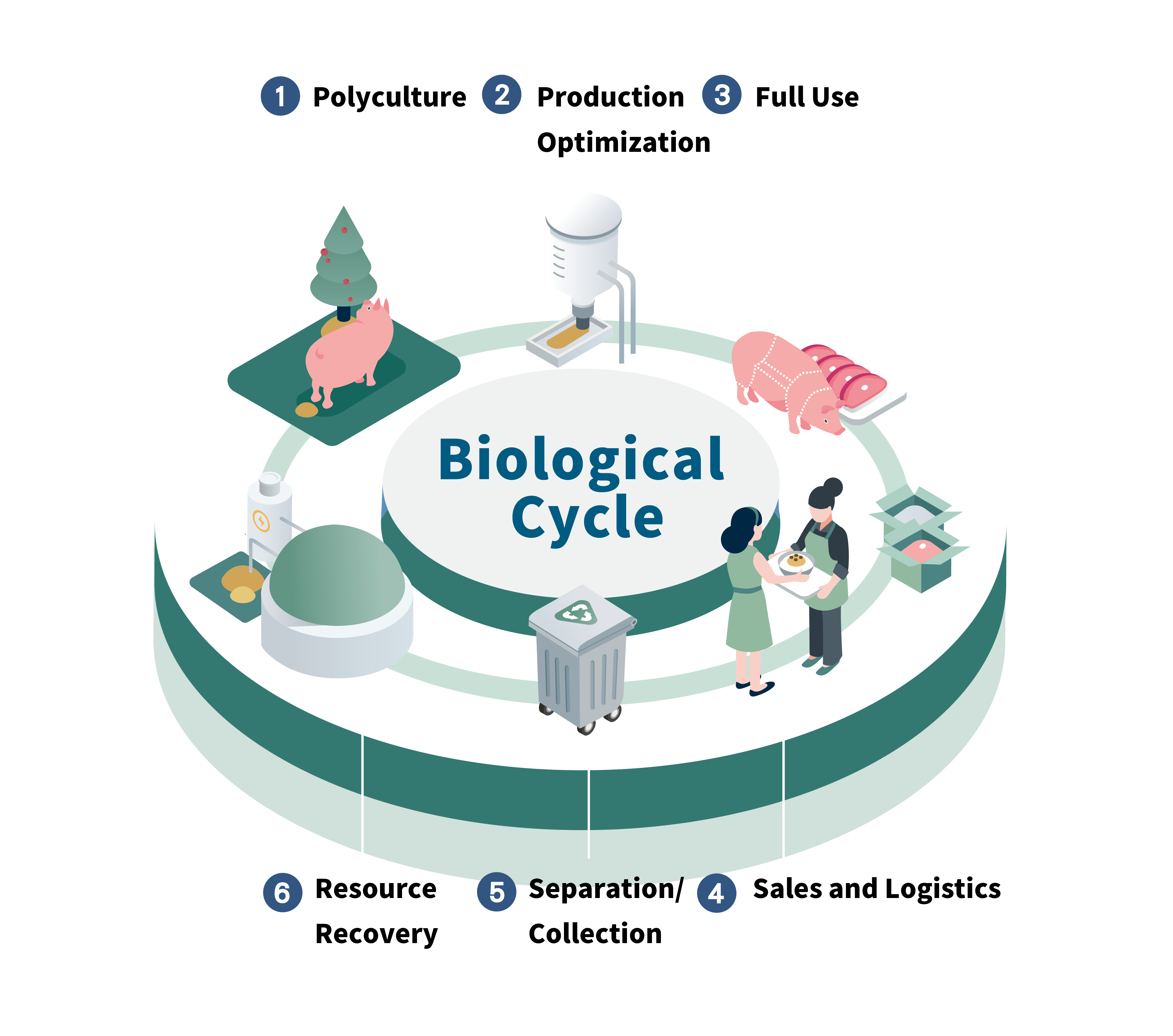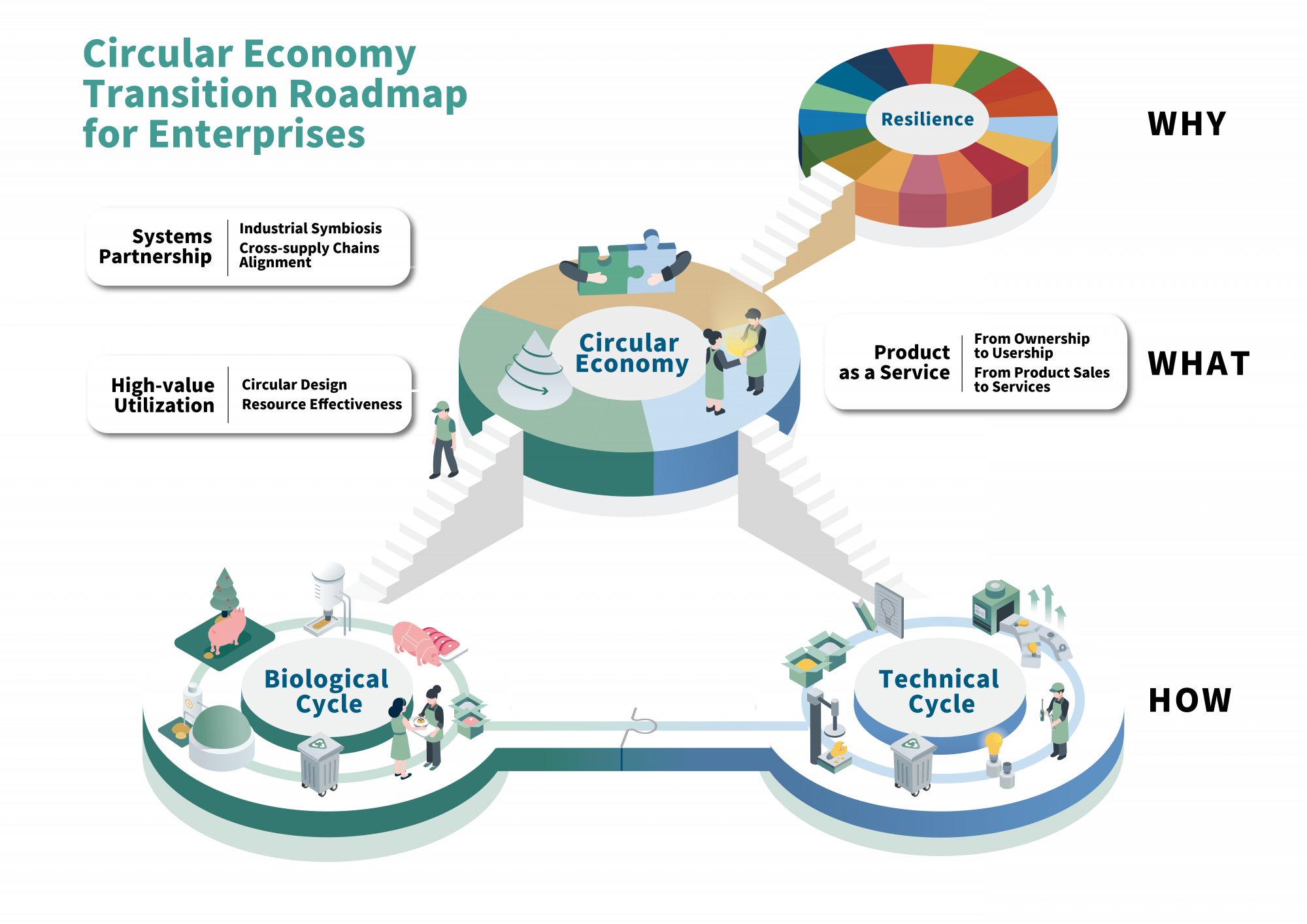Inspired by nature’s circular ecosystem, the circular economy is an economic and industrial system where resources are restored and regenerated. Unlike the linear economy, which follows a “take-make-use-dispose” model, the circular economy adopts a “make-use-circulate” approach. By redesigning products, transforming business models, and enhancing resource efficiency, it prevents waste and pollution at the source while creating more value with fewer resources.

The linear economy follows a one-way trajectory of resource extraction → production → consumption → disposal (represented by the gray central arrow). In contrast, the circular economy forms a closed-loop system, extending the lifespan of resources to minimize waste and environmental impact. The Ellen MacArthur Foundation illustrates this contrast using the Butterfly Diagram, where various circular pathways (represented by blue and green arcs) retain resource value—symbolizing the wings of a butterfly.
Transitioning from a linear to a circular model requires two main cycles to guide resource circulation. Consider the difference between an apple and an Apple iPhone:
- A fallen apple decomposes and returns to the soil as nutrients.
- A discarded iPhone, however, does not degrade for centuries.
These two require distinct circulation pathways:
Industrial Cycle: To use resources a long time
The industrial cycle (also known as the technical cycle) applies to products like electronics, vehicles, and machinery—materials composed of alloys, polymers, and synthetic compounds. The primary goal is to extend resource utility for as long as possible. Products should first be maintained and repaired, then remanufactured or refurbished to preserve valuable components. When reuse is no longer feasible, materials should be recycled in a controlled manner to prevent them from leaking into nature. To retain every resource, companies must integrate circular principles from material selection to product design.

Biological Cycle: For endless resources
Unlike industrial materials, biomass-based resources (e.g., food, organic matter) do not aim for long-term retention but rather continuous regeneration. A well-designed biological cycle ensures that natural resources are efficiently utilized and eventually return to the ecosystem as nutrients—creating a zero-waste regenerative system. Healthy soil is the foundation of this cycle, making responsible production and consumption critical to sustaining it.

There is no shortcut to achieving a circular economy, but there is a pathway. Different businesses will find their own ways to integrate circular strategies. Based on years of industry engagement, Circular Taiwan Network has developed the Circular Economy Transition Roadmap for Enterprises, a structured framework outlining key principles and opportunities for businesses:
High-Value Utilization
Maximizing resource value retention is fundamental to circular design. Research shows that 80% of a product’s environmental impact is determined at the design stage. By rethinking material selection, product structure, and business models, companies can significantly enhance resource efficiency and reduce waste.
Based on material properties, circular strategies can be categorized into the industrial and biological cycles.
Product-as-a-Service (PaaS)
Most traditional business models rely on higher production and consumption to generate profits, leading to increased environmental impact. To drive circular innovation, businesses must redefine ownership and consumption models.
The Product-as-a-Service (PaaS) model allows producers to retain ownership of their products while offering services to customers, reducing waste and eliminating planned obsolescence. This shift benefits both profitability and sustainability.
Systems Partnership
- No country or company can achieve circularity or net-zero emissions alone. Collaboration is essential—brands must work with manufacturers, and exporting nations must coordinate with importing nations. By integrating material flows, data, and financial streams, businesses can uncover new opportunities for circular innovation. Over time, this transition fosters a service- and knowledge-based economy, unlocking new value beyond manufacturing.

- Download the <Circular Economy Transition Roadmap for Enterprises>
Mitigating Climate Change
Every stage of a product’s lifecycle—from resource extraction and manufacturing to distribution, use, and disposal—contributes to carbon emissions. While energy transition is crucial, circular strategies significantly reduce reliance on non-renewable resources, making it a key solution for climate action.
Enhancing Human & Ecosystem Health
By eliminating toxic and non-recyclable materials from the design phase, circular strategies ensure safe resource handling across the entire lifecycle. This protects workers, consumers, and ecosystems from harmful emissions and pollutants.
Unlocking New Profit Streams & Jobs
Circular business models generate new revenue sources by optimizing resource flows. According to the World Economic Forum, the circular economy could contribute $4.5 trillion to the global economy by 2030 and create 700,000 new jobs in the EU alone.
Driving a New Economic Paradigm
The circular economy fosters a resilient economic system that integrates local employment, environmental responsibility, and resource efficiency. By decoupling economic growth from resource depletion, businesses can move beyond competition and shape the future of sustainable economic development.